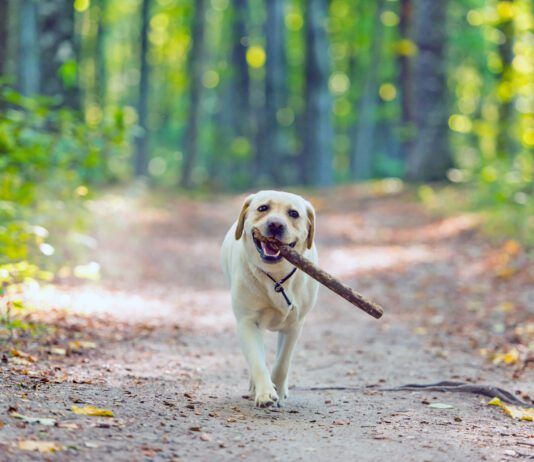(Vaccinations #1) Vaccine Titer Tests
The use of vaccine titer tests can help you decide whether or not your puppy is completely protected from disease after her puppy shots, or if your adult dog really needs any more core vaccines.
(Vaccinations #2) What are Core Vaccines?
Among healthy dogs, the first three core vaccines are expected to induce a protective immune response lasting at least five years. However, much longer protection from these vaccines has been demonstrated in dogs in many studies some- times, even as long as the dogs lifetime.
(Vaccinations #3) How Antibody Titer Tests may Affect? your Decisions?
Antigens are any substance that the immune system identifies as an invader and responds to by producing a chemical defense: antibodies. When everything is working as it should, your dogs immune system will recognize disease antigens that were introduced to his system via a vaccine (weakened or killed) or by natural exposure to the antigen that causes the disease (viral or bacterial).
7 Ways to Whittle Away Fear
The following tips on humans body language are applicable when interacting with any dog, but are especially important when dealing with a fearful dog. Adopt mannerisms and teach others who interact with your dog to do so as well.
(Training the Best Dog Ever #3) Introducing the Clicker with Hand-feeding
First, lets teach your dog the value of the click. Begin that lesson by once again hand-feeding all your dogs meals over the next four days. In general, I find that hand-feeding is a good exercise to reintroduce whenever my dogs (or other dogs that I am boarding and training) are learning a new, difficult skill, or when I sense that they are beginning to lose focus.
(Behavior Adjustment Training Tip #1) Ask Yourself why?
If your dog is exhibiting some behavior you dont want, you may have wondered, Why is he doing it? does he not love you? Is he trying to dominate you? If he knows you dont like whatever it is he is doing, then why does he keep doing it? Is he not your best friend, after all? I think the answer is that he behaves the way he does simply because he has some need that the behavior helps him meet. He may not even find the behavior particularly fun to do, as is the case with most reactivity. But your dog has learned that behavior is a way to get what he wants or needs.
(Behavior Adjustment Training Tip #2) Replacement Behaviors
A replacement behavior is what you teach your dog to do instead of the problem behavior. The key to making this work is when replacement behavior becomes a more efficient or more effective way for the dog to earn the functional reward than the original problem behavior(s). Lets go back to the example of the dog who rushes across the room, barks, and scratches the door when you reach for your keys or his leash. If you clip on the leash and open the door to let the dog out after he does all of that, you are providing him a functional reward (the fun outing) for his behavior and you will have to repaint your door much more often.
(The Culture Clash Tip #1) The Dominance Panacea
One model that has been put forth as a quasi-justification for the use of aversives in training is pack theory. Ever since the linear hierarchy was postulated in wolves, dog people have gone cuckoo in their efforts to explain every conceivable dog behavior and human-dog interaction in terms of dominance. We really latched onto that one. It is a great example of a successful meme. Dogs misbehave or are disobedient because they havent been shown whos boss. You must be the alpha in your pack. Aside from amounting to yet another justification for aversives-oriented training methods the dog is supposedly staying up nights thinking up ways to stage a coup so youd better keep him in his pace with plenty of coercion dominance has provided a panacea-like explanation for dog-behaviors.
(The Culture Clash Tip #2) Tug Of War
Dog owners have been admonished for decades by trainers, breeders and veterinarians to never play tug of war with their dogs because it risks increasing aggression and/or dominance in the dog. I think they've muddled predatory behavior, which tug actually is, with agnostic (conflict resolution) behavior, which tug is not. Played with rules, tug of war is a tremendous predatory energy burner and good exercise for both dog and owner. Like structured roughhousing, it servers as a good barometer of the kind of control you have over the dog, most importantly over his jaws. The game doesn't make the dog a predator; he already is one. The game is an outlet.
(The Culture Clash Tip #3) Barking
Watchdog Barking serves the dual purpose of alerting other pack members that there is an intruder or change in the environment and warning the intruder that they have been noticed. Dogs bark much more than their ancestors, wolves, who hardly ever bark. In domesticating them, we have selected for more barking. The predisposition to watch-dog bark varies among breeds and individuals. The modifying principles are the same, though, whether you're trying to coax a little more barking out of a couch potato Newfoundland or tone down barking in a hair - trigger German Shepard or miniature schnauzer.
(The Culture Clash Tip #4) Jumping Up
A classic culture clash example is greeting rituals: in most human cultures, we shake hands or bow. In dog culture, they buzz around excitedly, lick and sniff each other. The origin of jumping up is in infancy. Wolf pups will jump up to lick the corners of adults' mouths, triggering the latter to regurgitate food that the puppies can eat. This jumping up and licking is retained into adulthood as a greeting ritual. It's extremely common in dogs though its root has faded: only a minority of adults regurgitate. Greeting may become exaggerated when dogs live with humans because the social group is continually being fractured, then reunited: we leave and come back a lot, necessitating constant broad rituals. We're also vertical: the dog wants to get at our face. We also tend to let tiny puppies get away with it and then change the rules when they grow larger.
(The Culture Clash Tip #5) Training Regressions
People are terribly mystified by any change in their dog's behavior and go on a lot with the "why? WHY" as though there should never be any variability whatsoever in this living organism's behavior. Training regressions are a frequent occurrence and no big deal. It is so important to remember that behavior is always in flux, constantly subjected to whatever contingencies there are in the environment as well as being influenced by unknown internal events. In the case of behavior problems, there are three main reasons for behavior that had seemed to be "fixed" to break down again:






